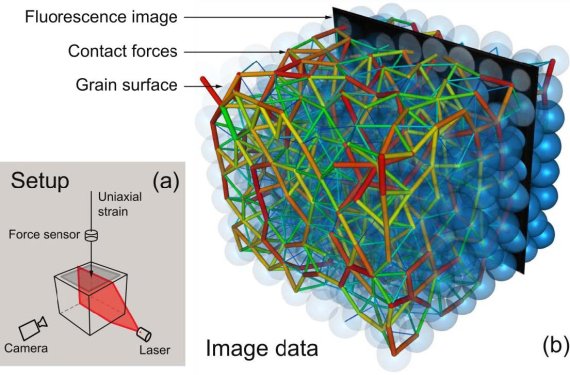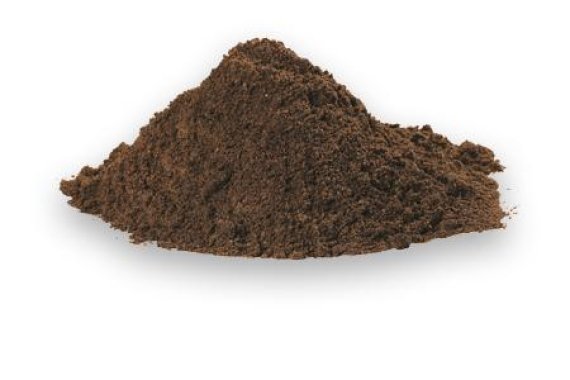With precision and to the level of a grain of sand. Literally seeing inside a sand heap is difficult. But it is not necessary. Dijksman and colleagues from Duke University in Durham (US) used a model for sand: a see-through barrel full of soft transparent gel beads. The gel beads are in a solution with the same density and refractive capacity. A dye is added to the beads so they light up fluorescently if they are touched by laser light. A moving layer of laser light then does the trick. The layer of light repeatedly shines on a cross-section of the barrel of beads. The fluorescent light so created is caught on camera. All the cross-sections added together – a bit like an MRI scan – create a detailed picture of the behaviour of the beads. Actually it is powerful computers that convert the information into a three-dimensional image. Little pictures that show, for example, how densely packed the beads are, how much contact there is between them, and how beads that touch each other change shape.

But it goes beyond pictures. Even the size of the forces at work between the beads can be measured this way. What happens, for instance, if pressure is exerted on the beads? In other words, if you walk on sand. For the first time, says Dijksman, such microscopic forces can be measured and related to the externally applied force. And the result is surprising. The beads do not change shape as much as you might expect on the basis of the external force applied. Dijksman: ‘You expect a linear correlation between the local distortion and the global compression. But that is not the case.’ The question is of course, why not? But that is hard to say, says Dijksman. ‘The mechanics of these chaotic particle systems are not yet well understood. That is one of the reasons for doing this kind of research.’ As well as generating fundamental insight into physical processes, the new technique also provides better models for studying the behaviour of these kinds of granular systems. And that has applications beyond understanding sand. It can also contribute to a better understanding of phenomena such as earthquakes, avalanches and soil settling.

